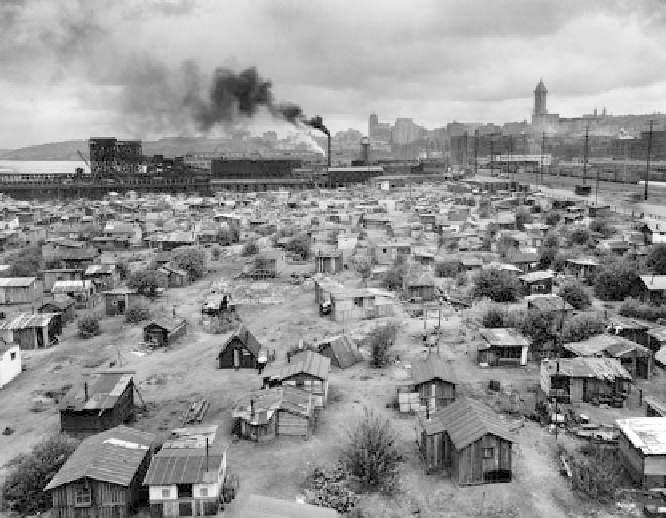Environmental Engineering Reference
In-Depth Information
Figure 5.7
The informal settlement known as Hooverville on the fi lled tidelands south of downtown
Seattle in March 1933.
Source
: MOHAI 1983.10.10788.
one and continues to serve as the foundation for the city. Local historian
Murray Morgan notes, “The engineers made it possible for a modern
metropolis to be built on the half-drowned mountain that lies between
Puget Sound and Lake Washington.”
96
Surprisingly, no major infrastruc-
ture project or civic building bears Thomson's name despite his central
role in the building of Seattle. In the 1950s, the municipal government
proposed the R. H. Thomson Freeway to connect Renton to University
Village in Central Seattle, but the plan was eventually defeated in the early
1970s by antihighway and environmental activists.
97
Thomson remains the
unacknowledged “hero” in the creation of contemporary Seattle.
The Land Refuses to Be Tamed
An irony of the transformation of the landscape in Seattle was that Thom-
son and the municipal government marketed these efforts as a means to
create a stable foundation for the city while unintentionally creating new

Search WWH ::

Custom Search